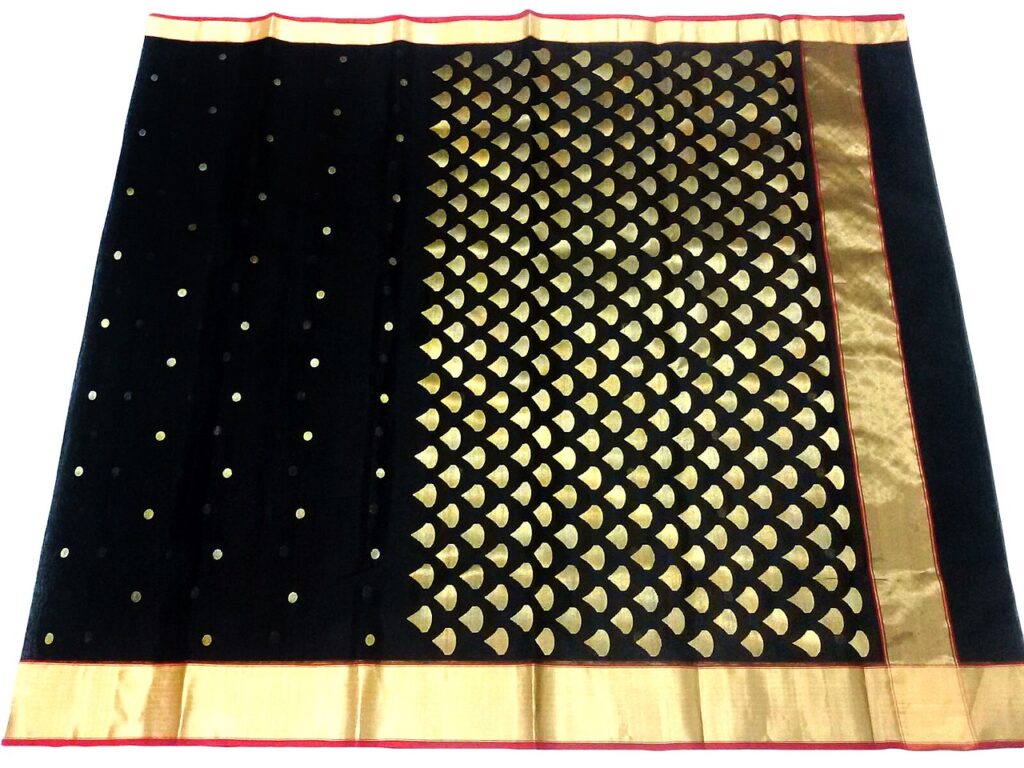Earlier you can only see some basic cotton or georgette printed sarees. The art of traditional sarees was dying. Some years ago when people decided that they wanted authentic hand-made stuff instead of fake machine-made stuff these traditional arts revived again. Slowly demand for traditional saree increased and now what we have is a market full of options, full of Indian handicraft.

These sarees are not only a piece of clothing used to cover bodies. This saree tells tales of history. Many times one art merges with another and developers and entirely new art. Most of the arts we see and call Indian are influenced by Mughals and Persians. They had a rich culture. Our art merged with theirs and developed some amazing new arts which we are proud of now.
About Chanderi Saree
Chanderi town is situated in the Ashok Nagar district of Madhya Pradesh. The town is known globally for its hand-woven chanderi sarees.
Chanderi sarees are made of three fabrics. Chanderi cotton, pure silk, or silk cotton. You will see coin motifs, leaves, peacock (a common motif among various traditional sarees), and geometric design. Chanderi sarees are known for their brocade and zari work. Chanderi saree material is very lightweight, comfortable and breathable.
The transparency and lightweight quality of chanderi have given it its name ‘woven air’. It is a favourite saree among both the young and old generation because it fits both styles. A written text by Saqi Mustad Khan ‘Maasir-i-Alamgiri’ states that Aurangzeb used chanderi to make a ceremonial robe called ‘khilat’.
History of Chanderi Saree
Chanderi weaving is probably even older than Ramayana. Traces of chanderi saree weaving goes back to the 13th century when Koshti weavers migrated from Jhansi to Chanderi. Ancient chanderi weavers were Muslims. During the rule of the Mughals, chanderi art progressed and touched heights. During the 12th and 13th-century, chanderi sarees were made only for royalty and upper-class people.
In 1910 Scindia royal family of Gwalior tried to revive the chanderi art. It was the time when chanderi sarees were introduced to gold thread motifs. But soon it was back in the closed doors again during the british raj. Materials of the chanderi saree saw a downfall too when silk was imported from Japan.
Initially, chanderi sarees were made only with white or off white borders which were decorated with gold or zari borders. But influenced by modern designs artisans are trying something different every day with traditional wear. So you will see every colour and every design in chanderi saree but it will still not lose its trademark.
It is hard to find a genuine chanderi saree in the market because many sellers sell mixed material saree because they are cost-effective. Consumers to buy those because they resemble the real piece and are cheaper. But the quality of a chanderi saree is not limited to its look you need to feel the material too. Support the art support the artist by buying authentic chanderi saree instead of buying machine-made mixed material fake chanderi saree.
